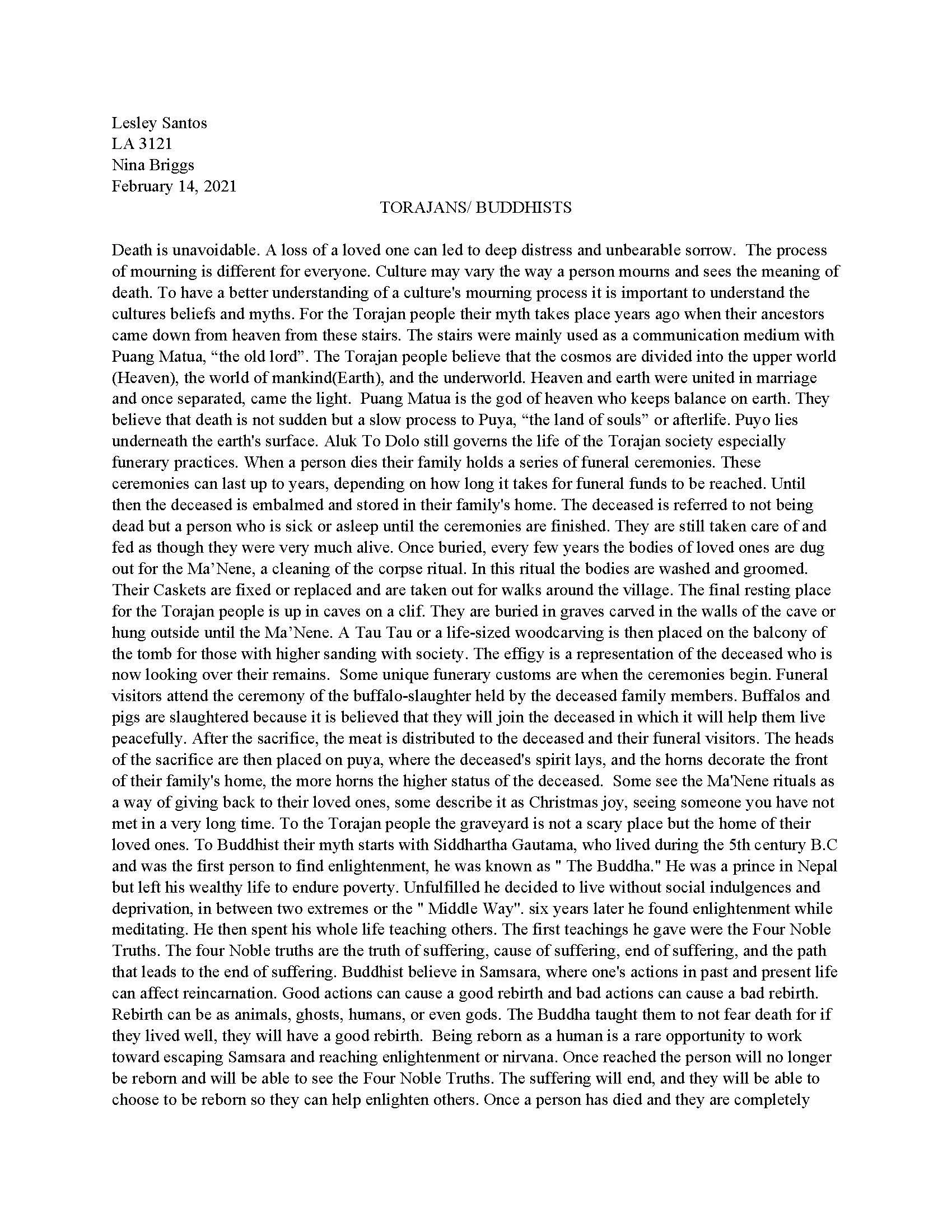FUNERARY RITUALS
“Something that is loved is never lost.” – Toni Morrison, Beloved
Students research cultural funerary rituals and acts of mourning. Each student selects two cultures to study and analyze, demonstrating a consciousness of alternative points of view and cultural diversity. Students develop critical analytical and strategic thinking towards an informed point of view, and think about human behavior, as it is influenced by culture - how to augment or diminish emotional responses to memorialized objects and spaces.
Utilizing the following categories, students define, justify and explain the culture’s’s processes.
SACRED BELIEFS. SYMBOLISM. RELIGION. SIGNIFICANCE. HISTORY. MEANING OF DEATH and how the beliefs shape funerary practices.
PREPARATION. PROTHESIS. PRESERVATION and how these corporeal interactions affect those left behind.
CONTAINER. and how those vehicles influence spaces to honor the dead.
ITEMS and why it is important for the items to accompany the dead.
INTERMENT and its effect on the mourners and the landscape.
MOURNERS. illustrating how social hierarchies and duties are expected and enforced - how grief behavior influences spatial hierarchies.
MOURNING. BEREAVEMENT PERIOD and the significance of time spent in mourning spaces.
PAYING RESPECT VISITS, OFFERINGS, SACRIFICES and their meaning or symbolism is inserted into landscapes.
FINAL RESTING PLACE LANDSCAPE OR STRUCTURE. and their spatial significance in establishing public memorial.
DECORATION. and how it spatially and psychologically represents culture, life and love.
FURTHER MEMORIALIZATIONS. COMMEMORATIONS and the material characteristics of monument.












